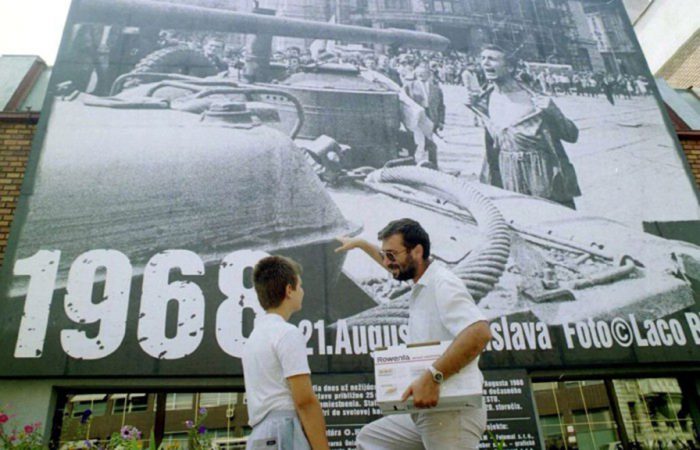Commentary
This photograph from 1998 illustrates the public use of iconic photographs depicting the Soviet occupation. On 21 August 1968, Ladislav Bielik photographed the situation in the centre of Bratislava – plumber Emil Gallo spontaneously stood in the path of Soviet tanks, exposing his chest. The photo ran in the local newspaper, and began to spread rapidly and became known throughout the world, often without attribution or with the location wrongly specified. This fate accompanies the photo to this day – it appears in history textbooks, sometimes placed in Prague or even in Budapest in 1956. The power of the gesture of the man in the photo thus overshadows the context in which the photograph was taken.
For Czechs and Slovaks, the picture is still reminiscent of the occupation by the Warsaw Pact troops in 1968, the helplessness of the population, uncertainty, and despair. As a symbol of a particular stage in history, it was also used in political banners in the 1990s. The Soviet occupation is commemorated every year as one of the main points of Czech and Slovak collective memory.

